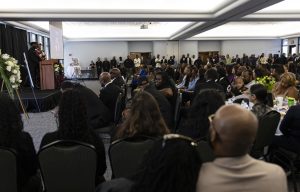Report reveals SacLink use hit an all time low this year
November 16, 2007
According to a recent report released in early October by the Office of Common Management Systems, only 8 percent of Sacramento State students use their SacLink e-mail accounts.
SacLink is an e-mail system, set up through the university, that can be used for educational purposes and personal matters.
According to the SacLink homepage, “SacLink was established to provide e-mail and Internet services to all students, faculty and staff.”
SacLink has a number of uses and allowsstudents the ability to e-mail, set up personal web pages, verify accounts for computer lab purposes and connect to wireless services.
If the number of students who check their SacLink accounts continues to be small, some professors see problems.
“Why students are not using their accounts warrants some serious scrutiny…especially (if there was) a need to send an emergency message to all CSUS students,” said Otis Scott, dean of the College of Social Sciences and Interdisciplinary Studies.
With many students already having personal e-mail accounts, some don’t see the need to check their SacLink accounts.
“I wouldn’t say it improves communicationbecause they can just use my other address,” Winston Smith, senior history major, said. “It’s not necessary to have.”
Larry Gilbert, vice president of Information Resources and Technology, said one of the reasons he believes the number of students using their SacLink accounts is so low is because the university allows self-assigned addresses during application time.
“Little effort was made in the past to get students to transition from their preferred accounts to their assigned SacLink accounts,” Gilbert said in an e-mail interview.
The 8 percent figure is similar to other campuses that haven’t emphasized the use of official campus e-mail accounts, he said.
In most cases where campuses encourage the use of school-assigned e-mail accounts, the number of users is higher.
“Those campuses that do encourage student use of campus e-mail find that more than 75 percent of students prefer to use that e-mail in the same way other adults do,” Gilbert said.
Gilbert said students should use personalaccounts for personal issues and school accounts for school and work purposes.
Denisa Martian, junior psychology major, uses a different Sac State alternative to communicate with her professors.
“I used SacLink a lot when I was a freshman…but now I use WebCT more,” Martian said.
Sac State officials have taken notice of the low number of students using SacLink and starting summer 2008, the university will require all newly admitted students use their school accounts for all official campus communication, Gilbert said.
Sac State hopes to gain more attention for SacLink by adding new features.
“We hope to do this by building an e-mail and web communications system with enough benefits that students will want to make the change,” Gilbert said.
Individualized messaging from professors and campus offices, direct access
to WebCT courses and access to school information are only a few of the new features.
Gilbert said those universities that have already implemented the new e-mail and web systems have seen more than 90 percent of students voluntarily make the transition from personal e-mail to school e-mail. He said one of the major problems Sac State has seen with student-personal accounts is the reliability factor.
“(The amount of students with externalaccounts) has resulted in a high rate of unreliability in being able to contact students about official university business,” Gilbert said.
Reliablility became an issue earlier this semester, as the university sent out financial aid messages to students.
About 30 percent of students who were e-mailed about their financial aid situation didn’t reliably receive the e-mail message.
Possibly the greatest concern regardingreliability and SacLink is the possibilityof an on-campus emergency.
The university purchased an emergencymessaging system that can send both targeted and broadcast e-mail messages to students within an hour of when the emergency occurs.
“We think the best way to do that is to send emergency messages to known campus e-mail addresses that are reliably checked by all students,” Gilbert said.
Sheryl Hitomi, senior criminal justice major, is an avid user of SacLink and believes it’s the best way to contact students.
“It’s the only way the university knows students have an account,” Hitomi said.
Jose Martinez can be reached at [email protected].























































































































